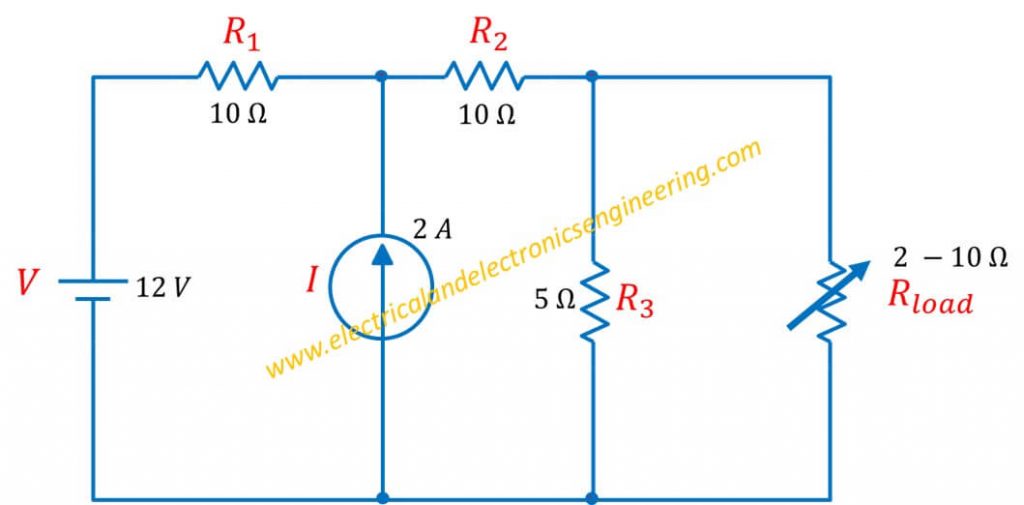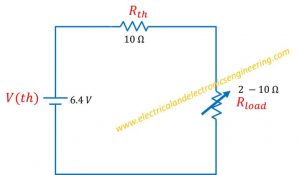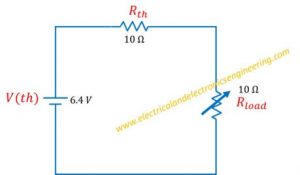In electronic circuits, the amplifier and receiver circuits often require the load the receive maximum amount of power. The maximum power transfer theorem sets the condition for which a load will receive maximum power from a circuit.
The load resistance will receive maximum power from a circuit when the resistance of circuit equals the Thevenin or Norton equivalent resistance of the circuit.
Example
Consider a circuit with variable load having resistance 2 – 10 ohms.

Determine the load resistance which ensures the maximum power transfer to load.
Ans: The Thevenin equivalent circuit (which was previously calculated here) for above circuit is:

From above circuit 10 ohms is the resistance for which the load will receive maximum power.
Let’s now determine the power transferred to load resistance when it is set at 10 ohms.

P (load) = V (load) * I (load)
V (load) from Voltage divider rule comes out to be 3.2 V.
While I (load) from Ohm’s law comes to be: I (load) = V(th)/R(eq) = 6.4 V / 20 ohms = 0.32 Amps
Finally P (load) = V (load) * I (load) = 3.2 V * 0.32 A = 1.024 watts
